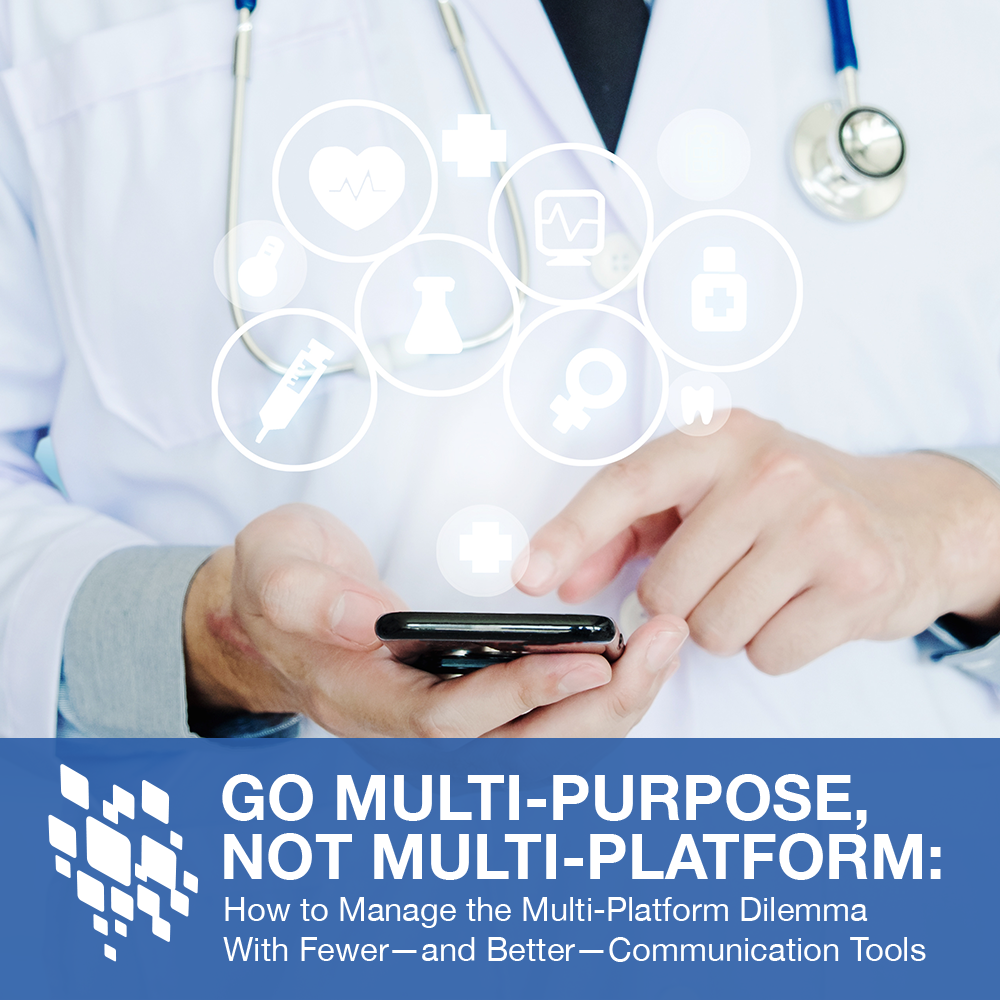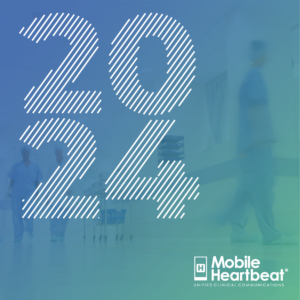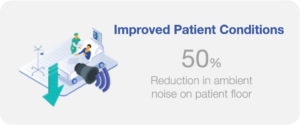In a recent survey from Bain & Company, more than 9 in 10 healthcare provider executives said they expected to invest in new software over the next year, with nearly a third of them marking clinical communications as a top-5 priority.
That’s great, right? Isn’t more communication a good thing?
Well, maybe not. If that spending goes toward multiple single-function platforms, it could be leading to what’s known as the “multi-platform dilemma.” This is when redundant solutions overcrowd and overcomplicate, causing financial waste, workflow inefficiencies, compatibility problems, and frustrated staff.
With communication platforms so entrenched in today’s healthcare facilities—and more spending on the way—it’s critical for leaders to preempt platform overload and make the best use of their tech investments. And our latest eBook explores how.
Download it for free on our resources page. In the meantime, here’s a five-minute recap:
Too Many Platforms, Too Many Problems
Often, platform overload starts insidiously when hospitals take an incremental approach to communications—such as giving physicians one platform to use and nurses another. Facilities can also create platform overload when they buy additional tools to fill functionality gaps in existing equipment.
Another common cause of the multi-platform dilemma occurs from using tools built into the EHR, such as chat and alarm management. Given the massive investment in EHRs, organizations can sometimes feel obliged to use these features in an effort to squeeze out every dollar of their investment, even if those tools don’t fit into existing workflows.
But no matter the cause, too many platforms can lead to big challenges—notably, fractured workflows, inefficiencies, and potential patient safety risks from having to toggle between solutions repeatedly and potentially missing communications. Operational costs are also a concern, even in unexpected ways: For example, health systems can waste budget just to support software for redundant or unnecessary solutions, such as middleware for alerts and pagers.
What Makes a Good Communication Platform?
A high-value communication platform should account for diverse workflow needs in a multi-purpose package. Here’s what to look for:
- Consolidated access that enables clinical and non-clinical staff to use a shared solution.
- An easy-find directory that makes all users searchable across multiple filters such as role, name, or location.
- Seamless functioning that supports workflow compatibility across existing processes and needs.
- Format flexibility that enables senders to customize the type of communication to the need—such as text for one-off questions, group chatting for collaboration, phone for complex issues, alerting for group notifications, and enunciated voice for hands-free situations.
How to Consolidate Tools and Maximize Investments
Ideally, your hardware should be able to support multiple features and applications for optimal efficiency. It should also account for the ability to add other use cases in the future.
But even if the ultimate approach isn’t exclusively a single-platform one, you can still push toward a multi-purpose strategy by driving most communication needs through a dominant platform and using any other tools sparingly.
As you evaluate potential consolidation opportunities, consider the following best practices:
- Ensure that as many users as possible have access to the platform in the format that matches their needs.
- Map the most important uses to the preferred communication platform and get users aligned on when to use different formats.
- Prioritize ease of use and integration with other key solutions, such as nurse call, bedside telemetry, and scheduling platforms.
- Monitor the volume of infrastructure investments to keep platform-to-platform switching to a minimum.
- Create a strong process to help users stay informed about the expectations for each communication format and which platform or device to use and when.
Less Can Be More—Much More
With digital transformation ongoing, healthcare facilities have found themselves navigating an innovative and growing ecosystem of communication tools. But as these technologies overcrowd and overcomplicate clinical workflows, leaders should seriously consider consolidation for its many potential benefits across user satisfaction, care quality, and the bottom line.
If you’re looking to start that journey toward a multi-purpose approach, reach out to see how our solution can help your organization achieve consolidation with less hassle and cost.
There’s more to learn! This was just a preview of our newest eBook. Get the full resource here.




